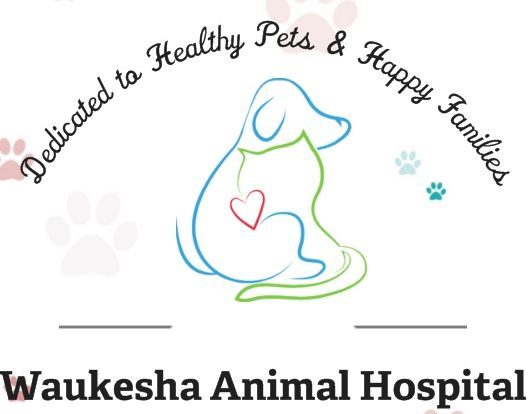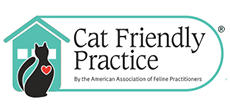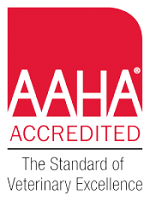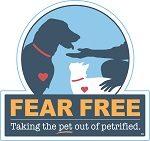
Do you know what some of the biggest misconceptions are about feeding your pet? Here are four that we commonly hear:
#1 – Adding rice to a pet’s regular food will help resolve diarrhea or vomiting. – The goal of changing a pet’s diet during GI upset is to feed a bland, easy to digest food to help the GI tract rest and recover. Adding rice to what they are already eating, is not likely to help much. With GI symptoms, it is often beneficial to change temporarily to a bland diet of rice and cooked, lean hamburger or chicken or a prescription diet like Hill’s I/D or Royal Canin GI low fat. Recommended proportions for a home cooked diet are 75% cooked white rice (brown rice has more fiber and therefore can be more difficult for the GI tract to process) and 25% lean, cooked meat. This diet should be fed exclusively, until the GI upset is resolved. Once your pet has gone a couple of days with no symptoms, then you can slowly start mixing in the regular food over a period of 5-7 days. . The biggest mistakes pet owners make with bland diets are:
- Switching back to the regular diet too quickly or too soon which can irritate the GI tract all over again.
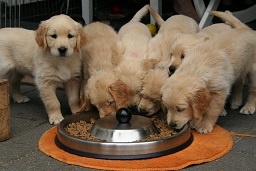 Not feeding the bland diet exclusively. If you add in treats, table foods, rawhides, etc.. you are potentially adding in things that will further irritate the gut.
Not feeding the bland diet exclusively. If you add in treats, table foods, rawhides, etc.. you are potentially adding in things that will further irritate the gut.
Keep in mind that diarrhea or vomiting can be the first symptoms of a more serious issue. It is always best to consult your veterinarian before trying a bland diet.
#2 – Feeding a grain free diet will help rule out food allergies – Food allergies are not as common as many people believe, and if pets have a food allergy, it is typically an allergy to a protein. Protein can be found in meats of course, but is also found in grains, vegetables or other carbohydrates. Grain free diets simply change the carbohydrate source to something different, like potatoes or legumes. Pets usually develop allergies to ingredients they have eaten before. In other words, a pet can develop allergies to ingredients present in a food they have eaten for years. A true hypoallergenic diet will be made with protein sources that a pet has not likely had before. With more and more food manufacturers making foods with ingredients like venison, fish, lamb, buffalo, sweet potatoes, peas, etc.., it is getting more difficult to find diets with protein sources a pet has never been exposed to. Prescription diets are now often made with more obscure proteins like kangaroo, rabbit or hydrolyzed proteins. To complicate matters, if your pet gets treats, table foods, rawhides or bones, while eating a hypoallergenic diet, you are likely adding potential sources of allergens back into the diet making a hypoallergenic food ineffective. To do a true, effective hypoallergenic food trial it is best to consult your veterinarian.
#3 – Free choice feeding is best as my pet will regulate how much food he/she needs – This depends on the pet. A small number of pets are good at eating only as much food as they need. The majority however are very much like us. They eat out of boredom or just because it is there and something to do. Free choice feeding can make it difficult to know exactly how much your pet is eating in a day. It can also make it difficult to notice if your pet is suddenly eating less, which can be an early sign of illness. If your pet becomes overweight, knowing how much to cut back is more difficult if you do not have a clear idea of how much your pet is currently eating. Being overweight has similar health risks as it does for people. Increased joint pain, heart problems and diabetes are just some of the potential health problems caused by or exasperated by excess weight.
#4 – Mixing a prescription diet with my pet’s regular, over the counter food will work just fine. – Prescription diets for disease processes like renal (kidney) disease, bladder stones, inflammatory bowel disease, liver disease, etc. are carefully formulated to support your pet’s body when dealing with these issues. For instance, renal diets have specific levels of proteins, potassium and phosphorous to help support kidney function. Adding other foods or treats to a renal diet will change these proportions making the diet much less effective. Pets on diets for GI problems typically have very sensitive GI tracts, and adding in other foods can be a little like playing Russian roulette. You never know what little extra may cause a flare up. When feeding a hypoallergenic diet, adding in other foods can add ingredients that the pet is allergic too, making the hypoallergenic diet ineffective.
Diet can play an important role in your pet’s health, and when your pet is having medical issues, the proper diet can make a huge difference in treating your pet’s problem. Having correct information as to how to use diet to help heal is crucial. If ever in doubt, it is always best to check with your veterinarian as we know and understand your pet’s special needs.
